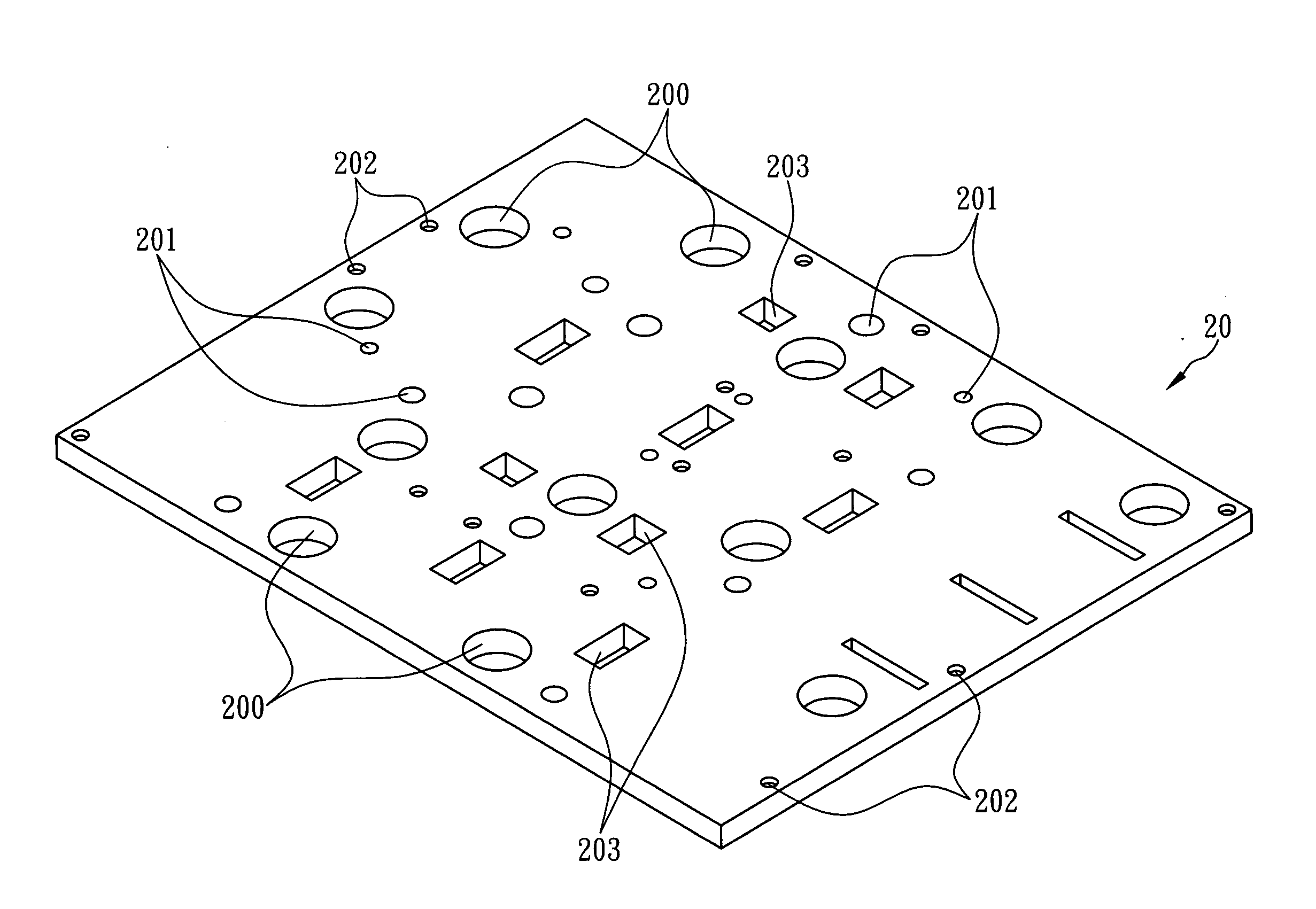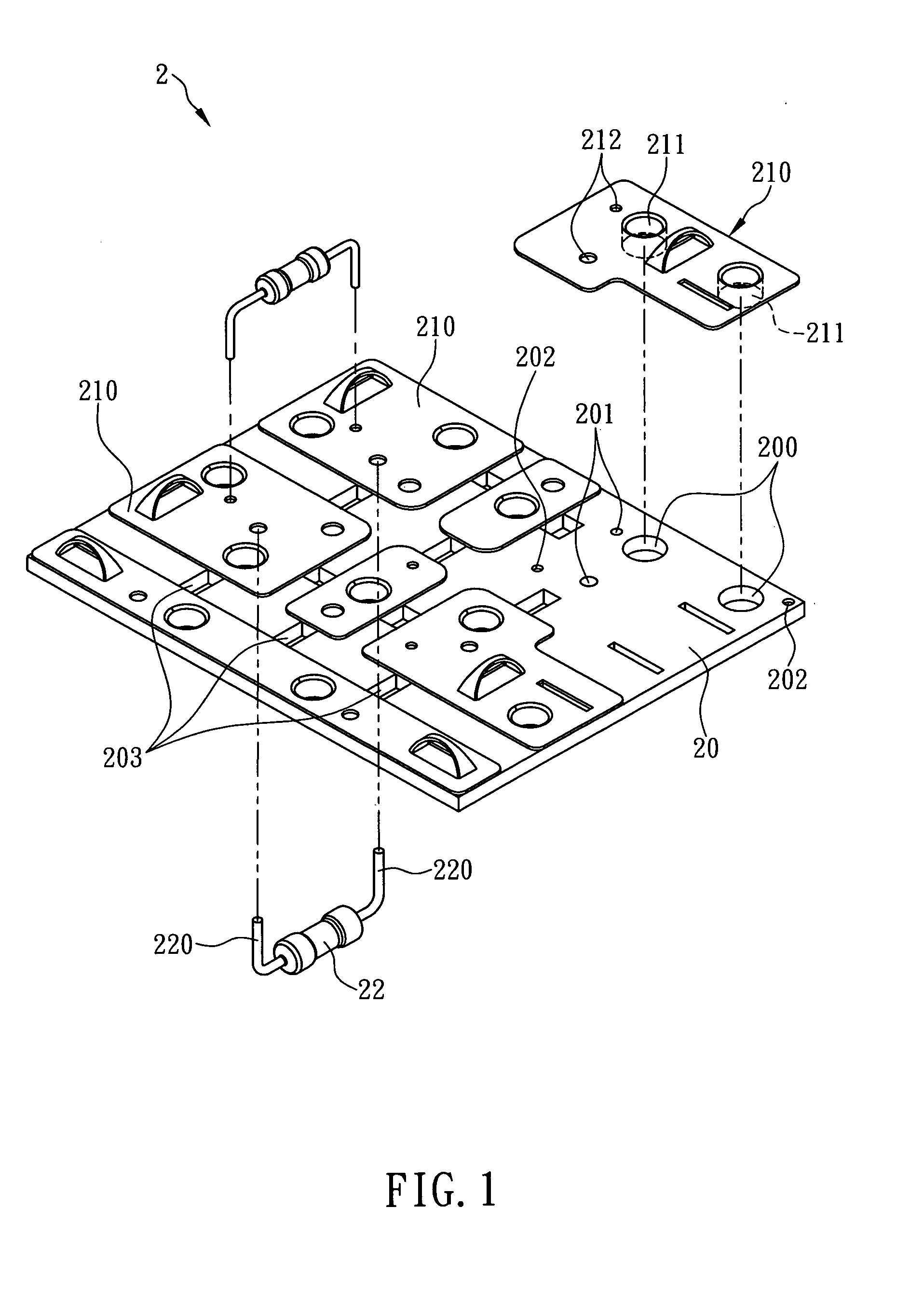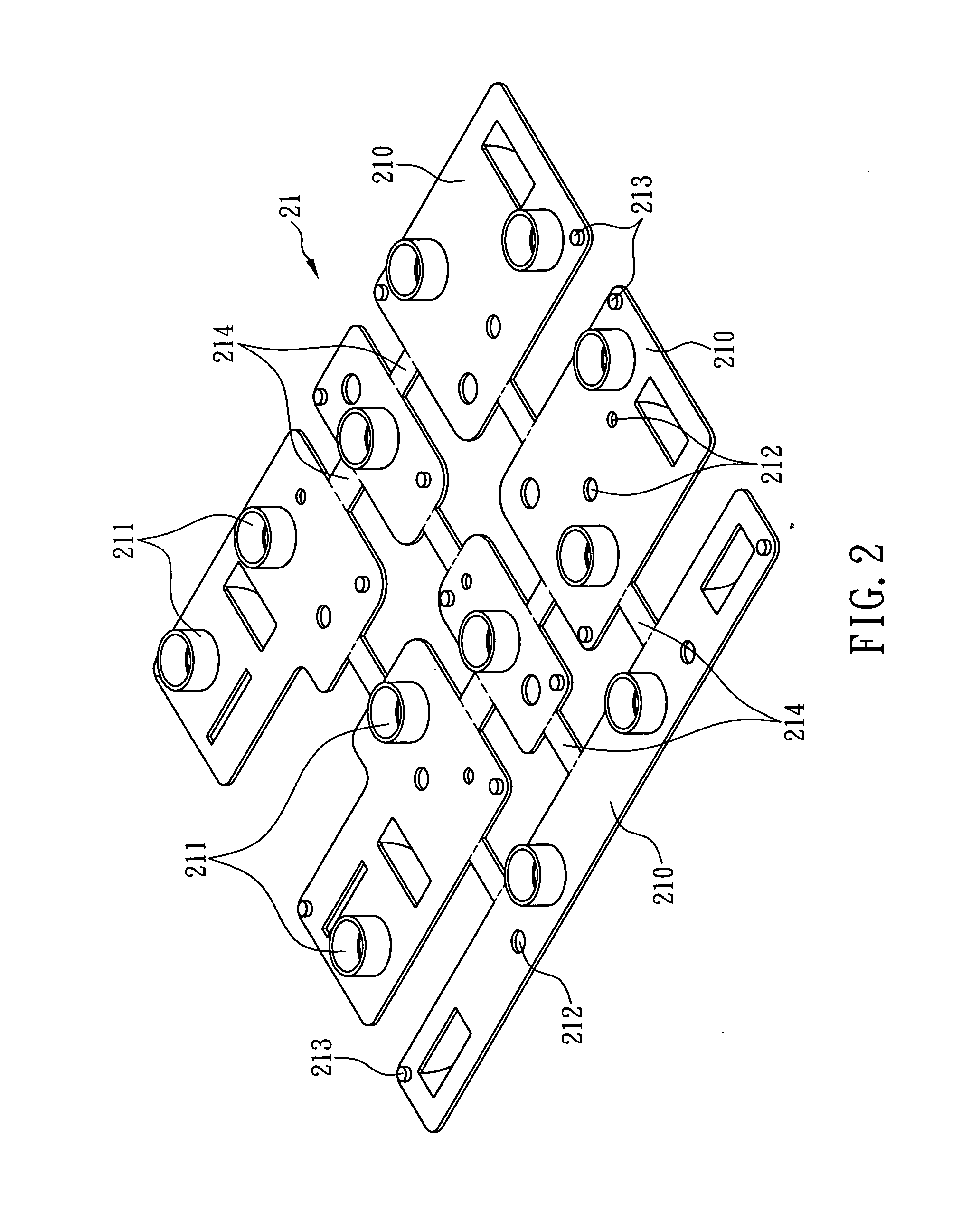Circuit board capable of loading high electrical current
a high-current, circuit board technology, applied in the direction of electrical apparatus contruction details, substation/switching arrangement casing, electrical components association, etc., can solve the problems of inefficient improvement of the manufacture efficiency of the printed circuit board, general relatively thin thickness of copper foil, and disadvantages of common commercially available printed circuit board manufacturing and operation, etc., to achieve convenient change and efficient simplified circuit board manufacturing process
- Summary
- Abstract
- Description
- Claims
- Application Information
AI Technical Summary
Benefits of technology
Problems solved by technology
Method used
Image
Examples
Embodiment Construction
[0018]The present invention is related to a circuit board capable of loading high electrical current. Referring now to FIG. 1, a circuit board according to a preferred embodiment of the present invention is illustrated. As shown, the circuit board designated by numeral 2 comprises an insulation plate 20 and a plurality of conductive plates 210, wherein the insulation plate 20 is evenly formed with a plurality of first riveting portions 200 (such as riveting holes or riveting posts) and a plurality of first insertion holes 201. Each of the conductive plates 210 is formed by punching and cutting a metal plate 21 (as shown in FIG. 2), and each of the conductive plates 210 is formed with at least one second riveting portion 211 (such as riveting posts or riveting holes). Each of the second riveting portions 211 can be matched with each of the first riveting portions 200 to combine with each other, so that each of the conductive plates 210 can be positioned on the insulation plate 20 by ...
PUM
 Login to View More
Login to View More Abstract
Description
Claims
Application Information
 Login to View More
Login to View More - R&D
- Intellectual Property
- Life Sciences
- Materials
- Tech Scout
- Unparalleled Data Quality
- Higher Quality Content
- 60% Fewer Hallucinations
Browse by: Latest US Patents, China's latest patents, Technical Efficacy Thesaurus, Application Domain, Technology Topic, Popular Technical Reports.
© 2025 PatSnap. All rights reserved.Legal|Privacy policy|Modern Slavery Act Transparency Statement|Sitemap|About US| Contact US: help@patsnap.com



